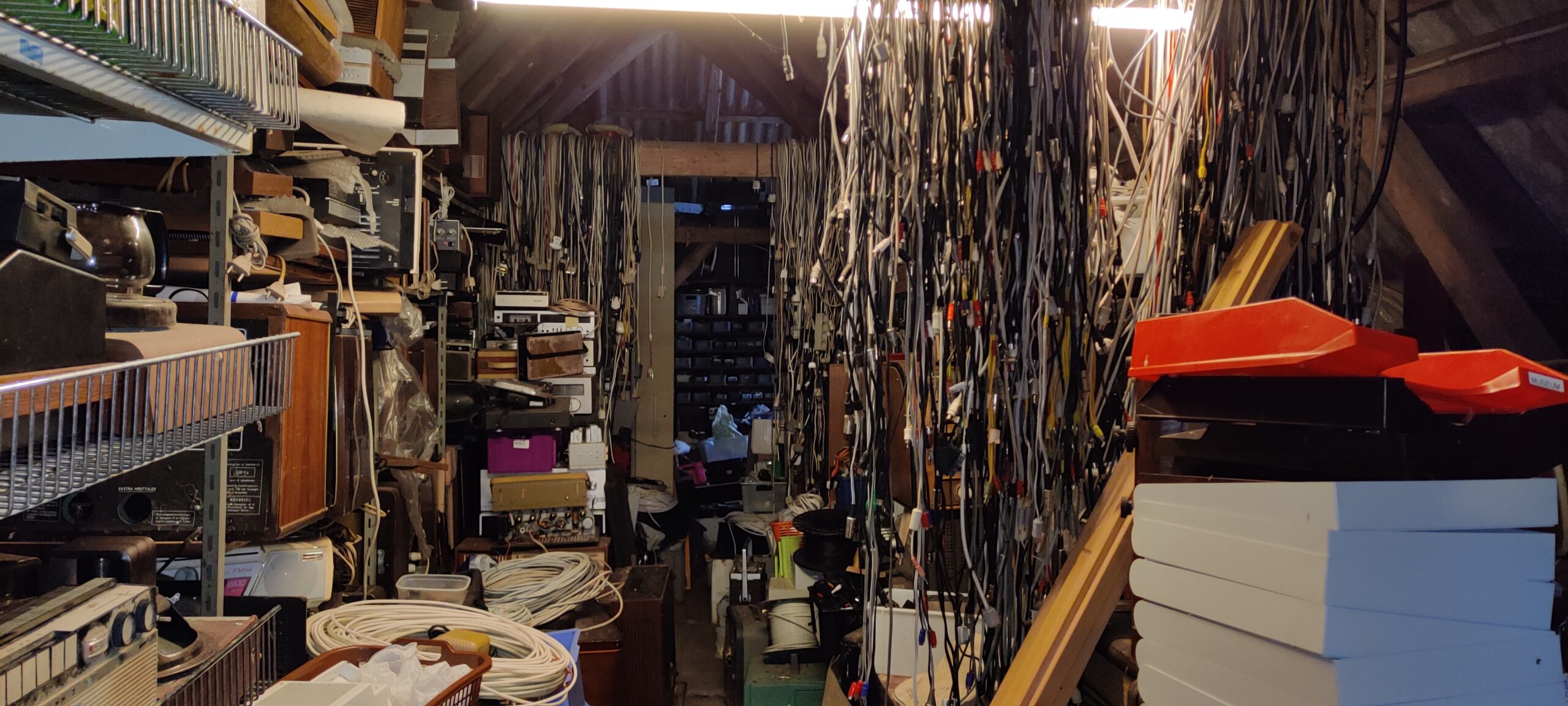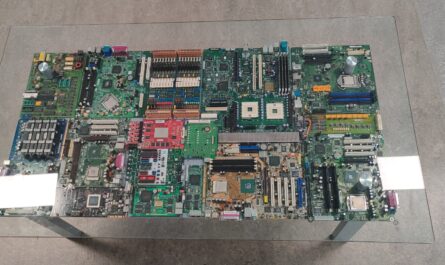What is it?
While searching around the web for nice electronics decorations and inspiration to The Circuit Board Coffee Table I found a nice digital clock built on a breadboard based around two different types of integrated circuits: the 4026 decade counter and the 4060 14-stage counter/divider. I’m fascinated by nice looking breadboard projects so I thought I could build it so it would look a little more sleek. This digital clock reminds me about the TTLCLOCK even though that contains a few more components. Another digital clock from KABtronics that contains many components is their Transistor Clock which is truly a nerdy wall decoration.
Before I learned about programming and microcontrollers I always kept away from electronics project involving anything that needed programming like microcontrollers, microprocessors or EEPROMs. I wasn’t sure where to start to get to learn about it, and I couldn’t imagine how they worked. Instead I would have loved to sit down and understand the schematic and build this digital clock when I was younger, since it is purely logic circuits and even some diode-resistor logic.
How does it work?
The nice thing about this digital clock is that it is rather easy to understand how it works, because it is divided into different modules.
The first part is the 4060 14-stage counter/divider connected to a 32768 oscillator, which gives a frequency of 32768Hz/2^14 = 2 Hz. Two buttons Minutes and Hours are used to set the clock by increasing the frequency so the clock counts faster. The 2 Hz signal is input to the first 4026 that works as a divide by 2 and outputs a 1 Hz signal. The 4026 are designed to directly drive a 7-segment LED display rather than outputting a BCD signal that needs a BCD to 7-segment converter, this helps to reduce the component count. The two LEDs are also connected to the 1 Hz signal to indicate the seconds.
The counters for ones of seconds (red wires) and ones of minutes (grey wires) counts from 0-9. However the counters for tens of seconds (yellow wires) and tens of minutes (green wires) only counts from 0-5, and needs to reset afterwards. This is done by the resistor and the three diodes that works as a three input AND gate, when segments E,F,G are turned on (this combination is first met when count equals 6) the counter is reset. The ones of hours (brown wires) also counts from 0-9 but the tens of hours (blue wires) only counts from 0-2. These two counters must be reset when the combined counter equals 24. This is again done by the three diodes but now connected to a combination that first happens when the counter reaches 24 and now both counters are reset.
No resistors are needed between the 4026’s outputs and the 7-segment displays because the outputs only supplies around 1-3 mA. Since the LEDs in the 7-segment displays can not handle a 5 V supply voltage the two diodes 1N4007 are needed to give a voltage drop.
Why did I build it
Why would anyone bother to build something like a digital clock on a breadboard and waste a couple of hours on it? First of all I think it is fun to build stuff on breadboards even though they can be buggy, have bad wire connections and works bad at high frequency. Despite of all the wires and connections the clock actually worked the first time I powered it up. I know breadboard computers like the one from Ben Eaten is much more cool to look at and play with, but I like the simplicity of this design and its also a little more self contained – just connect power and it works. Playing around with breadboards is also a good way to learn about electronics because it can be more intuitive compared to multilayers PCBs with SMD components.
Another reason for building this digital clock is that I have a tradition every year with some old classmates to gather for Christmas lunch. Then we each have to brings some small presents for a Danish tradition called Christmas package game. Some should be repeats from last year and some should be homemade – this will be this year’s contribution.
Want your own?
If anyone is interested in building this digital clock on their own, the parts are listed in the link at the beginning. If you prefer to buy everything as a kit I might be considering to offer it with every component needed or in a fully assembled and tested version. Please contact my for inquiries.








Circuit diagram plss
You can find the schematic in the first link in the blog